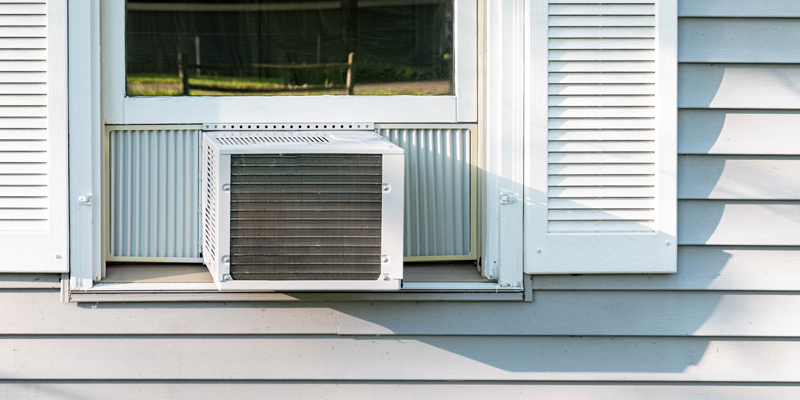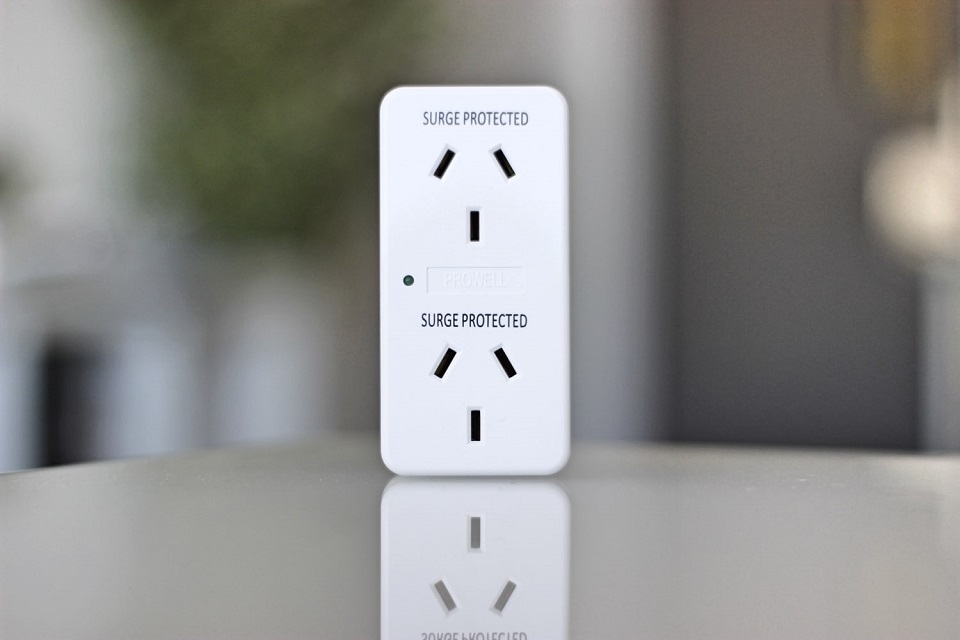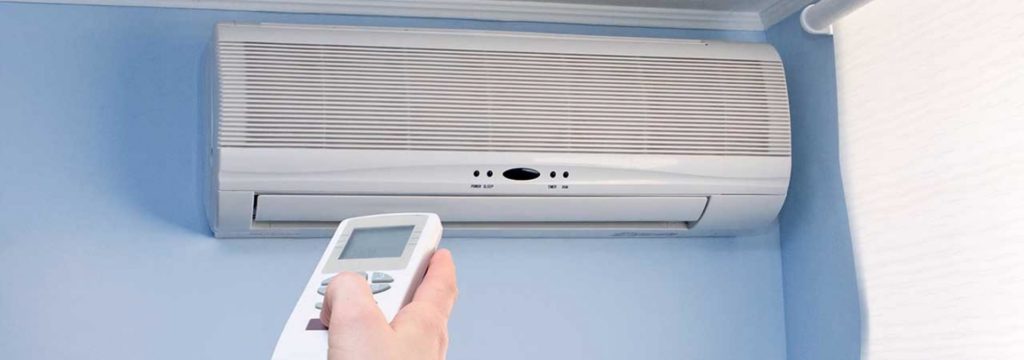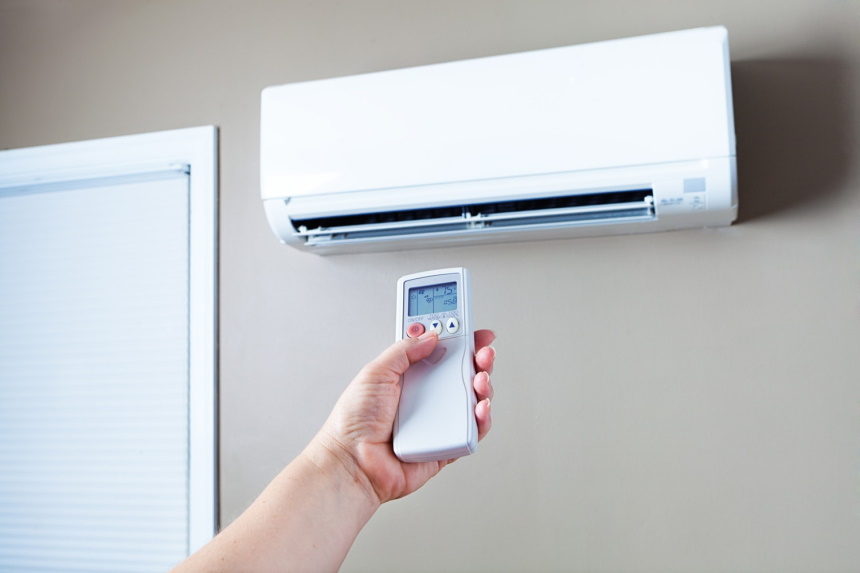

Keeping a room cool during summer can be daunting if you don’t have the right cooling equipment. Window air conditioners help keep your living room or bedroom cool even in the harshest of summers. There is a wide range of window air conditioners that you can choose from and which will help you achieve exceptional cooling results. We are here to help you pick the right one for your home.
After reviewing 44 different casement window air conditioners, we were able to come up with an objective in-depth review that you can use to help you pick the best casement window air conditioner. By exploring ACs such as Frigidaire FFRS1022R1, the Editor’s Choice, one can’t help but appreciate just how powerful window ACs are.
A simple procedure was used that helped us identify the best window AC in the market. Some of the key features that we explored and dwelt on include ACs’ BTUs, the working area, voltage, and warranty information. By understanding these aspects of an AC, you will quickly see why your room or home needs a particular AC and not another. For a better understanding of ACs, we have included a table with thorough reviews exploring each item. Our buying guide, together with a FAQ section, further explains the various factors and features that one must consider when buying their air conditioner.
More features: speed adjustment, sleep mode, 24-hour timer, Effortless™ temperature control, remote control, SpaceWise® adjustable side panels, automatic last operation saving function
For those uncomfortable days and nights when you want some temperature relief in your house, the Frigidaire FFRS1022R1 casement window air conditioner is your perfect friend. This aircon offers maximum comfort even in the harshest of winter evenings or summer afternoons. Because this equipment is fitted with an energy-saving sleep mode feature, the room’s temperature goes up a few degrees in the evening. It further saves energy by turning on and off at half-hour intervals. This is to ensure that the room’s temperature remains at the desired level always. The FFRS1022R1 has a multispeed fan that provides the user with three different speeds. You can control the speed of the fan from anywhere in the room using the easy to use remote control.
This vertical window air conditioner employs the renowned SpaceWise® adjustable side panels that easily adjust to fit any window. With a total working area of 450 square feet, it is easy to see why this is a favorite gadget by many homeowners. It delivers clean air into your home using the antibacterial filter, which also cancels out room odors and airborne particles. Frigidaire has not compromised on functionality and quality, given that the unit restarts at the previous set temperature. The 24-hour on/off timer is designed to help your home cool and comfy always without having to worry about rising utility bills. Your convenience is guaranteed by the easy to touch buttons and the comfortable readout temperature panel. A one-year warranty backs the unit.
More features: sleep mode, energy saving mode, remote control, built-in room temperature sensor through remote, 3 fan speeds, 24-hour timer, 10.4 EER
The PerfectAire Slide Air Conditioner offers 10,000 BTUs, and its working area reaches up to 450 square feet hence making it ideal for large rooms. It is a premier sliding window AC unit that requires minimal window design changes. With user-friendly digital controls, you will enjoy how the unit keeps the freezing weather outside your home. The three fan speeds that the unit boasts of make it easy to use the unit while at the same time helping to save energy. It also features full-range multi-direction controls, and a ‘follow me portable thermostat’ remote control, which makes it efficient and a comfortable companion. The timer option of the unit makes it possible to programme it up to 24 hours. This means it can switch itself on or off, which then means that you can set the temperature you want to find your room before you enter. The unit also features auto, sleep, dry, and energy-saving modes.
The dimensions of the PerfectAire Slide Air Conditioner are 23.5 x 14.75 x 21 inches. With an expandable window mounting kit, it becomes very easy to install this unit on almost any window. PerfectAire has installed in the unit a filter that removes dust particles and other harmful airborne particles. There is a check filter indicator which further serves to make the unit an ideal component to own. With a one-year warranty, you can rest easy knowing that this air conditioner will always keep the room temperatures at the level you prefer.
More features: dehumidifier option, digital display, 3 fan speeds, sleep mode, 10.4 EER, remote control, installation kit included, filter replacement signal
The KOLDFRONT CAC10000W vertical window ac unit is one of the best in the market. With a 10,000 BTU capacity and a working area of up to 450 square feet, you can see why it is a preferred choice by many homeowners. The fan efficiently delivers low, medium, and high speeds, hence making it possible for you to regulate the warmth in your house. If there is a power outage and power resumes, you needn’t restart the ac since it does so itself at the previous temperature settings. The unit dehumidifies the room at a rate of 2.7 pints per hour.
With an EER reading of 10.4, one can see why this ac unit is considered efficient. KOLDFRONT has installed a 4-way direction ai louvers that make it possible to distribute air around the room symmetrically. The unit produces a 52dBA on the inside and 60dBA on the outside. This makes the unit one of the reasonably quiet ones in the market. The filter is designed to trap all dirt particles. And given that this filter is washable, this makes the unit economical and environmentally friendly. The total weight of this air conditioner is 74 lbs. This makes one of the heaviest in the market, and you should seek assistance while assembling. The unit consumes 115 volts and is backed with a 1-year warranty by KOLDFRONT.
More features: Money Saver® technology, automatic air swing, last setting saving function, washable air filter, ENERGY STAR® qualified, 12.1 EER
The Friedrich Chill CP06G10B window air conditioner is a sturdy unit that generates 6,000 BTUs. It can cool a room measuring up to 250 square feet. The unit features several fan speed settings hence making it easy for you to set the ideal temperature. With a robust four-way airflow, the aircon can deliver airflows of up to 200 cubic feet per minute. It then becomes very easy for the unit to distribute cold air throughout the room. The ultra-quiet feature of the unit makes it possible for you to enjoy cool air in comfort. The Chill’s Money Saver® technology will help you save money and the environment. This technology is set such that it only comes to life when cooling.
The air you will be breathing in your home will become fresher and cleaner. The antimicrobial air filter installed in this unit is washable hence removing the need to buy extra filters every time. The manufacturer has included a check filter alert that helps you keep the unit performing optimally. The running of this Friedrich AC is cheap. With EER of 11.2 and an average annual maintenance cost of $44, it easy to see why it’s one of the best. Friedrich uses the eco-friendly R32 refrigerant and also packages the unit in environmentally friendly materials. Included in the package is standard installation hardware. This makes the air con one of the easiest to install. The 24-hour timer and the one-year warranty serves to make this unit modern and reliable.
More features: 12.1 EER, 5.9 ft power cord length, on-board electronic control panel, remote control, LCD screen, 3 fan speeds, 24-hour timer, last operation memory function, washable air filter, sleep mode, UL listed
The Whirlpool Energy Star WHAW081BW air delivers quality air into your home. It is the perfect horizontal air conditioner to buy when you want the best air conditioning in your house. This 8,000 BTUs unit cools and dehumidifies a working area reaching 350 square feet. The unit also delivers 1.76 pints an hour dehumidification. It is an efficient piece of equipment to own, given that its equipped with a 24-hour on and off timer. At your convenience, you can customize cooling time to match your schedule and comfort before you can enter the room. The unit features three cooling speed settings. The eco mode and sleep mode features afford you flexibility at all ties. Whirlpool has included a filter that traps not only dust but microbial particles. The filter is washable, and this makes the unit economical and environmentally friendly. The unit is 12.1 EER Energy Star® compliant.
The minimum height of your window should be 14.5” to make this air conditioner ideal for your home. The window’s width should be between 23” and 36”. With a 5.9 feet LCDI power cord, it becomes easy to maneuver the installation and use of the unit. The control panel of the air con is easy to operate. The 8-way directional air louvers enable the unit to distribute fresh, clean air around the room effectively. The superiority of the unit is further seen in the ‘sleep mode’ where the temperature in the room gradually increases after it is activated. A full one-year warranty backs the unit.
More features: 24-hour timer, sleep mode, ENERGY STAR® certified, 2 fan speeds, remote control, 4-way air deflector, washable filter
The Midea MAWO6R1YWT is a leading vertical window ac unit that boasts of 6,000 BTUs. The unit is ideal for cooling a room measuring up to 250 square feet. The manufacturer has installed in this unit the ability to dehumidify, cool, and ventilate a room. It comes with 2 fan speed settings and 2 cooling modes which including sleep mode. The 4-way directional louvers enable the air con to deliver maximum fresh and cool air around the room at all times. To enhance its efficiency and keep its quality intact, Midea has included an easy to read LED screen on the unit. Moreover, the air filter installed captures microbial particles. By making it washable, Midea has allowed you to not worry about buying a replacement filter every week.
The overall dimensions of the MAW06R1YWT are 18.5 x 16 x 13.4 inches. It can be extended, making it possible to fit the unit on bigger windows but with a maximum height of 14”. The unit features a 24-hour timer, which makes it possible for the unit to turn on before you enter your house. Another thing that sets this unit apart from the competition is the EcoSave functionality. With this functionality, the ac can switch off when the desired temperature of a room is reached. This makes the unit economical and friendly to the environment. Being an Energy Star® certified unit and also being backed by one-year parts and labor warranty, you can rest easy knowing that it is a high-quality investment you’re making.
More features: 6 ft power cord length, 1530 rpm motor, anti-bacterial filter, 2-way air deflector, 11.1 EER
The Friedrich FFRA0511R1E AC conditioner has been designed to deliver 5,000 BTUs. It is the perfect air con for a small room measuring up to 150 square feet. It also dehumidifies the same room at a rate of 1.1 pints per hour. This is a unit that delivers on comfort, convenience, and style. This AC can be installed on any window measuring between 23” and 36” in width but no more than 13” in height. It comes installed with 2 cool fan and 2 general fan speeds. What the unit lacks in sophistication, it compensates in performance and reliability. It does not have a 24-hour timer; instead, it presents you with mechanical dials. The manufacturer has worked hard on the noise emission of the unit, and it emits 51.3dBA on the low and a high of 56.5dBA.
The Friedrich FFRA0511R1E is a window vertical air conditioner that makes sense in condos and other small living quarters. Its filter captures airborne particles hence guaranteeing you fresh clean and cooler air. The louvers are designed to spread the dehumidified and cooled air to the entire room with ease. With a weight of 48 lbs, one cannot omit to notice that this unit is easy to install. After all, Friedrich has included easy to install instructions. Though the unit has an Energy Efficiency Ratio (EER) rating of 11.1, it is not Energy Star® certified. Still, the manufacturer has real faith in the product and has backed it with a full one-year warranty.
More features: mechanical controls, 2 fan speeds, 24-hour timer, 4-way fan directions, washable filter, 11 CEER
Having a small room does not mean that you shouldn’t enjoy the pleasures that an air conditioner affords. The Arctic King WWK05CM91N air con has a capacity of 5,000 BTUs and covers an area reaching up to 150 square feet. It is an easy and exciting unit to own, given that it features mechanical controls. Its uniqueness is further tweaked by the 4-way fan direction that allows you to control the direction of air with ease. The seven temperature settings of the unit make it easy to set your exact preferred room temperature. The unit also features 2 control and fan speed settings. The unit’s filter traps all dirt particles and helps you enjoy fresh air at all times. The easily accessible filter is washable. You don’t have to worry about buying replacement filters.
This air conditioner, which can fit on windows of 23” to 36” width, is very easy to install. The manufacturer has included an easy install kit. Like the more expensive models, this small unit has an auto-restart feature. This means that in case of a power outage, it will restart at the previous set temperature level. The unit doesn’t come with a remote, and it also doesn’t feature a timer. However, what it lacks in sophistication, it delivers on simplicity, durability, and reliability. The manufacturer has backed it with a 3-year warranty. There is also a 5-year on sealed system warranty on the unit. The unit is Eco-friendly refrigerant R32.
In our review, we have explored the many characteristics of leading casement window air conditioners. Let us now look at the numerous features that you must consider before you can make your pick. We are also going to provide a few useful tips on how to install a casement window air conditioner. We have further answered a few FAQs that often nag buyers. With this information, you are assured of being able to identify your best AC.
If without an AC when summer comes, many people suffer and even regret their decision not to install a simple one. A casement window AC helps you beat the extreme heat in summer. Such an AC will help you cut down on utility bills and also add to your interior décor. Here are some distinct advantages that you must know about casement window ACs.
For the many people who prefer a cheaper way to cool their homes, the window AC unit provides the answers they seek. Once you have decided to invest in an AC, the first thing to decide on is the square area you want it to service. The AC unit should have enough British Thermal Units (BTUs) to cool the room effectively. Follow these steps when installing an AC unit;
After the above steps, take a look at the user manual and learn how to operate the AC.
Unlike central air conditioners, the window ACs are cheaper. Of course, the brand name and model matters like in every market segment, but overall, window ACs are much less expensive. Depending on what your budget is, you will easily find Friedrich and Frigidaire among other brands with ACs going for as much as $1,500 and more. At the same time, some ACs bearing the same logos are going for as low as $150.
When it comes to picking the right casement window air conditioner, some numerous factors and characteristics must be put into consideration. An AC will help you cool a room, but it must of the right size and should be fitted right. Some of the things to look into should be the size of the room vis-a-vis the working area capacity of an AC unit. The BTU capacity of the unit, among other things, also matters. Below are some critical features that you should consider when it comes to investing in a window AC.
The area of the room that you want to cool is the first factor to consider when you decide to buy an AC. It would help if you stood by taking the floor area and then multiplying that with the height of the inner wall of the room. The standard height of a room is considered to be 8 feet. The area of a room is used to establish what type and size of an AC to buy. A room measuring 380 square feet will be best served by Frigidaire FFRS1022R1, or PerfectAire Slider Air Conditioner, which has a capacity of 450 square feet.
The cooling capacity of any air conditioner is measured using the British Thermal Units (BTUs). The primary measure then is BTUs per hour. For best results, pick a unit whose BTU capacity fits your space. The lower the BTUs to a room, the lower the ability of the AC to cool the room. In turn, this leads to the AC taking a big chunk of your energy bill. On the other hand, an AC that is overly large for your room leads to uneven cooling and dehumidifying. There will be sections with uncomfortable hot or cold air. An example of how BTU relates to the surface area;
100 to 150 sq. feet – 5,000 BTUs
150 to 250 sq. feet – 6,000 BTUs
250 to 300 sq. feet – 7,000 BTUs
300 to 350 sq. feet – 8,000 BTUs
Remember, if a room receives direct sunlight, an additional 10 BTUs should be considered. For every additional person who will spend regular time in a room, an additional 600 BTUs should be added. Finally, a window AC should come with an extra 4,000 BTUs if installed in the kitchen.
The dimensions of a casement window air conditioner and those of the window are critical because a mismatch of the two will lead to the need of remodeling the window. The ACs in the market are sold based on dimensions, and this serves to help you know whether a certain AC can fit on your window. While many window air conditioners can be adjusted when it comes to width, a majority of them don’t have room for height adjustment. You will find a window AC such as MIDEA MAW06R1YWT bearing 18.5 x 16 x 13.4 inches measurements. This AC can be fitted on a window measuring between 23 and 36 inches, but the height should be 14”.
There are two types of window air conditioners, namely, vertical and vertical sliding. Each of the installation methods should match a particular AC. Both of the installation methods are easy to understand and execute. While the user manual should include a user installation manual, we have explained in detail how to install a window AC elsewhere in the review.
Working area means the total area a window air conditioner can effectively cover. A room with a total area of 300 square feet must be fitted with an AC with a working area of at least 300 square feet. In the case of Frigidaire FFRA0511R1E, for example, it cannot be affixed in a room measuring more 150 square feet.
The ease in cleaning your window sliding AC unit or a vertical one depends on things such as accessibility and its design. Some of the ACs come with washable filters too.
The warranty that a window air conditioner comes with should serve to persuade you on the decision to make when it comes to buying it. While a few manufacturers haven’t provided warranty information, a majority of ACs come with a warranty. A majority of the reviewed ACs carry a product and workmanship warranty of no less than three years.
The filters that come fitted on air conditioners serve to prevent airborne particles from entering the room. Some filters even capture microbial particles. As such, a filter is a key component in an AC. You will find some ACs such as Friedrich Chill CP06G10B being installed with washable filters hence saving you some money.
The Energy Efficiency Ratio (EER) rating helps to tell us how many BTUs the air conditioner uses for every watt of power. This then means that the higher the EER, the more efficient the AC is. As a general rule, you should buy an AC whose EER rating is higher than 10.0 to enjoy the best energy and cost-saving benefits. The Friedrich Chill CP06G10B and Whirlpool Energy Star WHAW081BW enjoy an EER rating of 12.1.
An AC should help you enjoy staying indoors. Many of these ACs are designed to allow you to regulate the flow of air in the room. You will find a majority of them featuring a 3-fan or 2-fan speed setting. There are other ACs with 4-way directional louvers that enhance the cooling effect in a room.
The Frigidaire FFS10221 is our editor’s choice. This vertical AC is one of the best in the market because of its superb performance. However, its awesome functionality coupled up with a great price tag that makes it score highly on our scoreboard. The AC has a working area of 450 square feet and boasts of 10,000 BTUs.
If you are looking for the best casement window air conditioner that will wholly upgrade the air conditioning system in your home, then the PerfectAire Slider Air Conditioner is your answer. This AC has a 10,000 BTU capacity and covers an area of 450 square feet. It is our upgrade pick, and you will be amazed at the features it comes with.
The Koldfront CAC10000W AC is one of the best vertical units out there. It’s energy-efficient, quiet, and offers a dehumidifying option, or, to put it simpler, one of the best casement window air conditioners.





